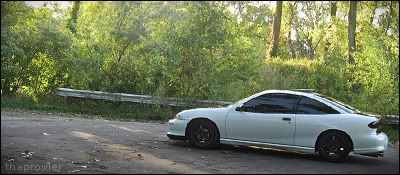Ugh, everytime I sit down to post something here I end up writing a physics essay, and changing my oppinion and starting over. But heres my theory, for those of you who have the patience to read it.
But I think Adam is right... sort of. I don't agree with the reasoning he gave for it (1 could be fixed with a lower bumper, 2 really is a financial drawback not a performance one, 3 makes sense, but any setup unde acceleration will do this, the question is what setup will do it the least, and 4 well, obviously that has nothing to do with performance). Regardless, I think what works for RWD cars will work for FWD. If you tihnk about it, a rwd car doing a wheelie is exactly what we are trying to prevent. However, our cars physicaly cannot do that, becaue if they tried to pivot at the front wheels the rear wheels would just press against the ground and nothing would happen. This is why we need a stiff rear, so it doesn't sink and let the front raise. Also as far height of the front and rear... well consider this:
You have a beam, it looks like this ```````^````````````````````````= (yes I know thats crappy, but the ^ is the fulcrum, and the = is a spring, the ` are where the beam is and it is resting on the srping.) Now the easiest way to compress the spring here would be to pull straight up on the front, that is pretty easy to understand. Now if the front was higher, the easiest way would be to push up and right (perpendicular to the beam). If the front was lower, you would want to push up and left to compress the spring. Now lets apply that to our cars

. We DONT want to compress the rear, we want to resist the front lifting as much as possible. I magine the car is facing left, like the beam. When we accelerate the resistance is obviously pushing right. But there are several forces pushin up and down, so these all need to be considered. If the car were to be higher in the front, air would flow easily over the car, but would not flow easily under. This would cause more airpressure beneath the car, and would be taking weight off of the wheels. BUT, the lift under the car would not be appied evenely, because the suspension is not the same on both ends of the car. The softer side, would lift faster, resisting the other side from lifting aswell. So for that reason I think having the front slightly higher, would be beneficially, ONLY if the front springs were stiffer than the rear.
BUT, there are more forces at work than just airdrag. Remember what I said about our cars wanting to do a wheelie, but not physicaly capable because the rear wheels are already on the ground. I'm not sure where this would take effect, but at some point, the force of the front bumper wanting to lift over the accelerating tires (like a wheelie), is going to be much greater than airdrag. Obviously, the car cannot pivot in that way very far because it pushes the rear wheels into the ground. However, it is still taking weight off of the front wheels as it TRIES to lift them. So once this upward force is greater than the downward force of air, it becomes beneficial to lower the front to resist the upward motion. With the air resistance, the force was acting on the entire bottom of the car, so if could be directed with adjusting spring stiffness. With the wheelie force, it is only acting infront of the tires, if cannot be redirected, so it must instead be resisted as much as possible. To do this the car must be lowered in the front, the greater the upward force, the more the car must be angled. Idealy you want the car pointing directly into the force, but it would be extremely difficult to determine that exact angle. Stiffer rear springs would help resist that force even more.
The air pushing up on the entire bottom of the car, could be redirected to the rear by having stiffer front springs. Pushing up on the back, pushes down on the front, like a seesaw. But at some point that redirected force will not overcome the lift on the nose of the car causes by the bumper wanting to lift over the front wheels. How much power your car needs before that happens, I don't know. But I doubt it is very much, for our cars stock, it MAY be beneficial to have a higher front with softer rear springs, but any decent amount of power, and I would think the opposite is a better set up.
PS: I'm not a drag expert, I've never even been to a drag strip, I'm looking at this only from a physics perspective (unfortunetely I'm not a physicist either). If anybody has any arguments for the front higher, I'd love to hear them, and I'm sure others would aswell. And yes I concidered what Boosted2point4 said, but based on what I said above, if the car was lower in the front, and when accelerating the front still lifted, you would have to lower the front even more, because the angle of the car is not matching the angle that the force is being applied at. The closer the force is to perpendicular, the greater the effect it will have, like opening a door.













